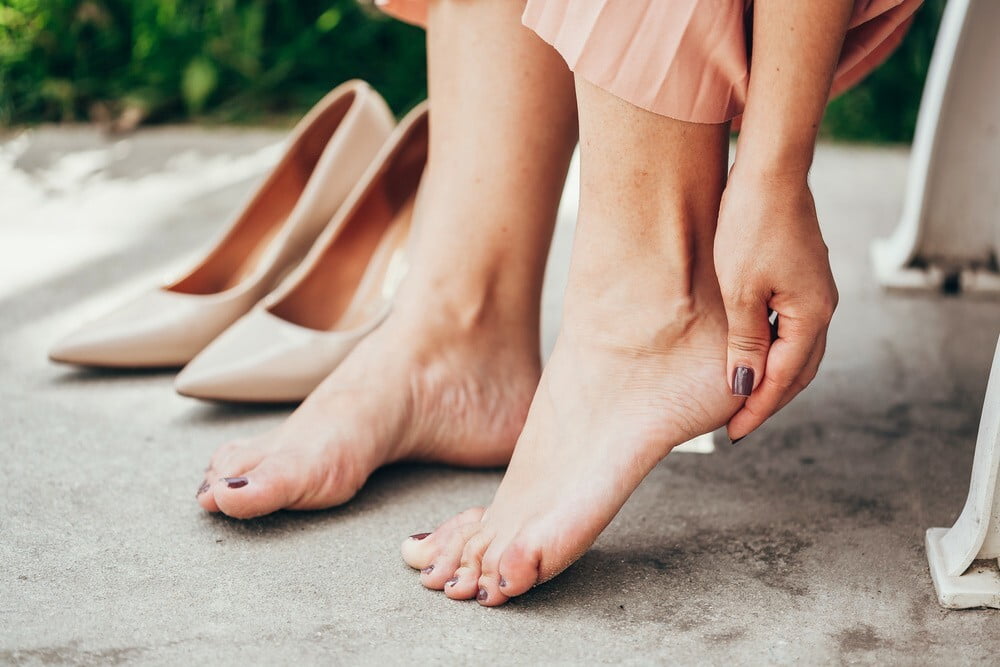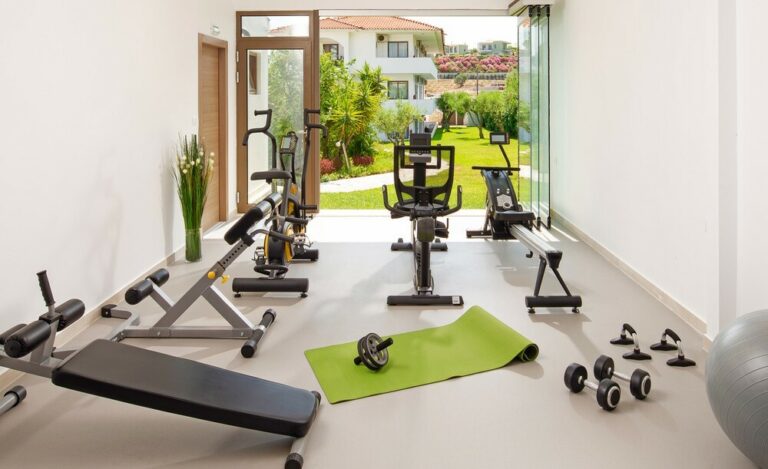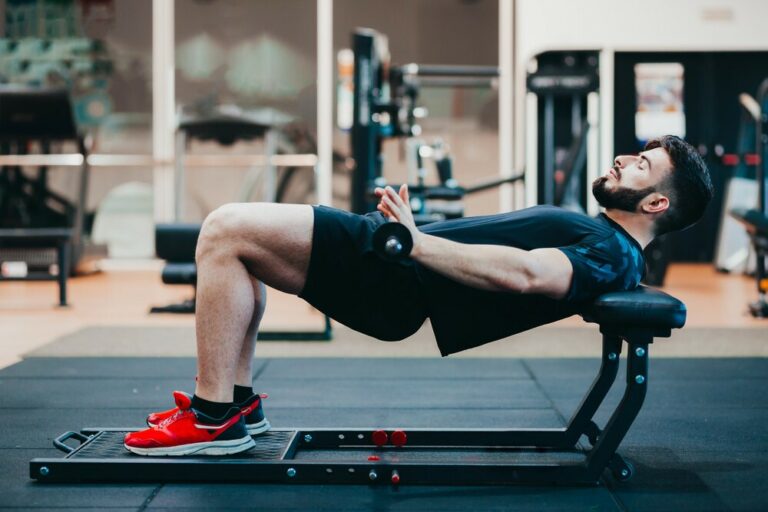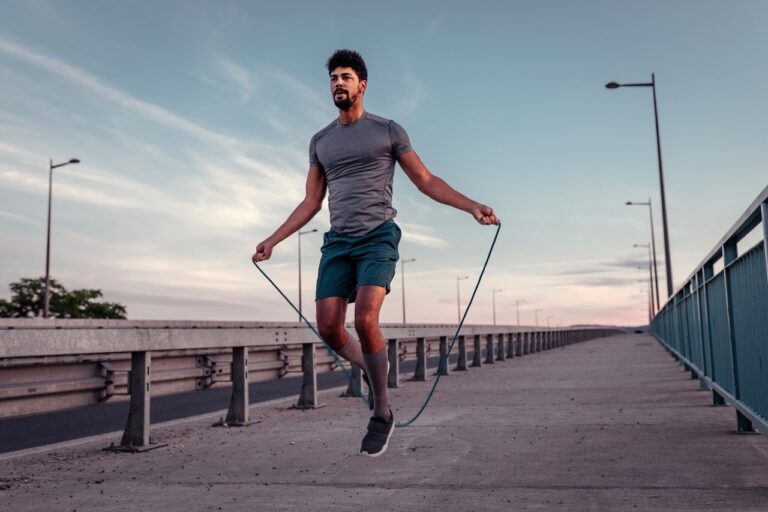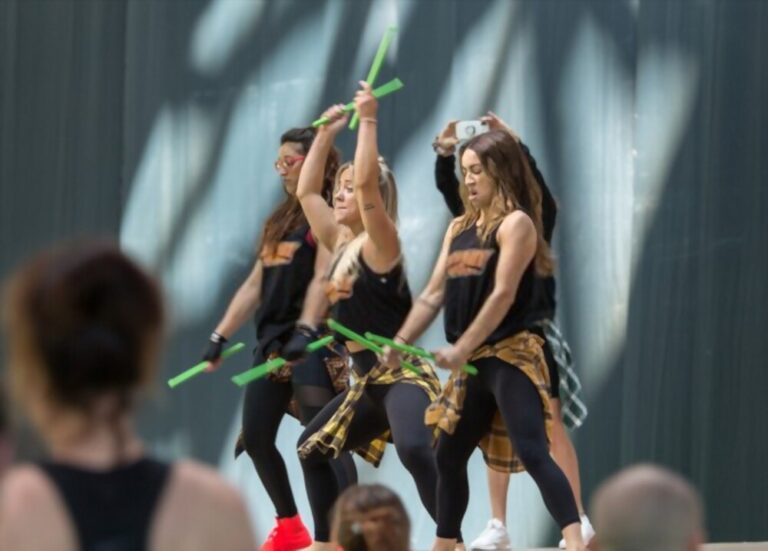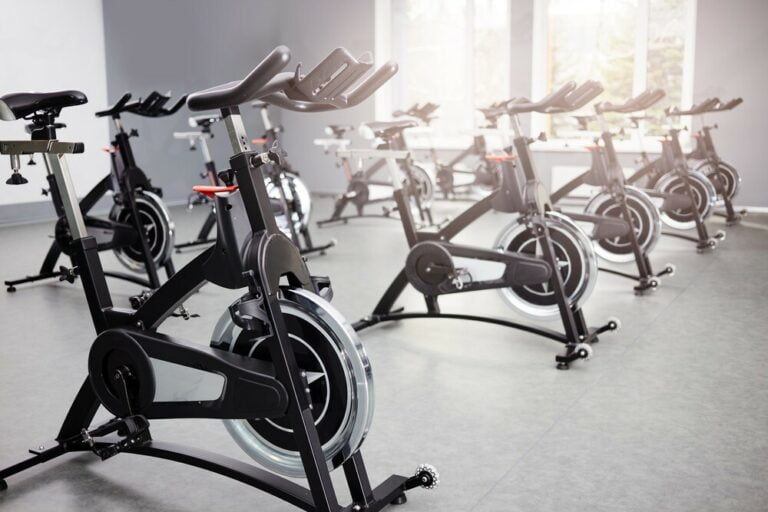Why Do My Feet Hurt When I Jump Rope?
You’ve probably heard that jumping rope is a great exercise for your heart, lungs, and muscles in your body.
That’s true! But what you may not know is that jumping rope can increase chances of injury for your feet when you jump on hard surfaces like cement or pavement.
Of course, you can always get an anti-shock mat to cushion the floor underfoot or find a softer surface to jump on, but you also might be asking yourself, “Why do my feet hurt when I jump rope?”
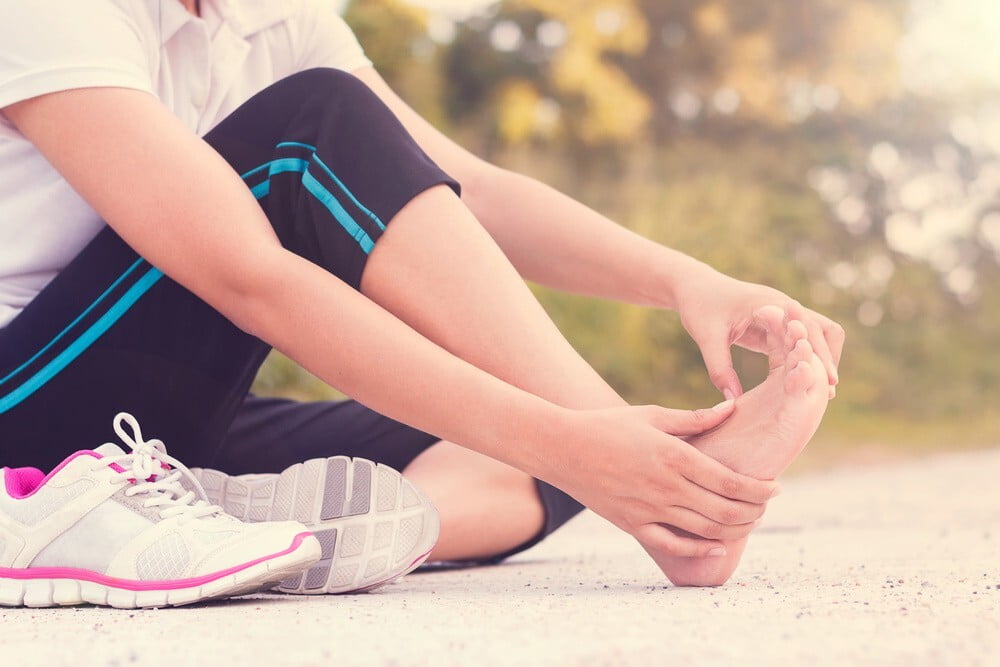
Normally, your feet have more strength than your upper body, making them less susceptible to injury. However, jumping causes a lot of stress on the calves and quadriceps, which can cause pain in the legs or thighs.
Once you stop or slow down the jump rope or try to land softly from a jump, this can cause too much strain on a weak muscle and result in pain similar to plantar fasciitis.
There is also an increased risk of injuries such as sprains or fractures when making contact with the ground from these high-impact jumps.
What Causes Foot Pain From Jumping
Let’s take a look at the different reasons that cause foot pain from jumping.
Weak muscles:

If your calf and quadriceps are too weak, they may not be able to support the effort of jumping rope, causing them to give way. This makes it more difficult for your feet to land softly after a jump, impacting the ground and creating pain in the ankles, feet, and calves.
Foot defects :

Runners and walkers are more susceptible to heel pain because their feet are built to put more strain on the heels.
If they continue to jump rope on rough surfaces, this can lead to heel pain and, in some cases, plantar fasciitis.
Abnormalities in the bones of the feet can also be a factor, flat feet, inflammation of the arch, hammertoes, high arches, tight ankles, shin splints, and bunions.
Plantar fasciitis:

Plantar fasciitis is a very common injury caused by running and jumping for prolonged periods. It can affect the whole of the foot, but the arch or heel most commonly.
When jumping, this foot and ankle joint are forced into an abnormal position with excessive stress on them.
Depending on the severity of damage done to this area, it can cause sharp pains in both feet and ankles.
Poor footwear
Poorly fitting shoes are a common cause of foot pain because they prevent you from working out properly. If your feet aren’t comfortable in your shoes, you won’t be able to jump for long periods.
This problem is very common in children who tend to focus more on their shoes than their comfort level.
Wear shoes that provide cushioning, grip, and support, avoid shoes that are too tight, have high heels, or are made of very hard materials.
If you wear flip-flops, athletic shoes, or other soft, flat shoes, it can be easy to injure yourself while jumping.
Try wearing something sturdier like tennis, running or cross-training shoes. These are made of materials that will protect your joints and give your feet extra cushioning and arch support.
Prevent ankle injuries when jumping rope
Here are some pro tips to help you prevent ankle injuries when jumping rope:
Start slowly:
If you have never jumped before, then we suggest that you start slowly. Sometimes you may make the mistake by jumping high and fast because you feel it is an effective way to shape.
However, this can often lead to injury.
Get into some proper jump rope training programs and be warned only to do a new skill once you’ve mastered the basics, or you could injure yourself.
Warm-up:

Warm-up exercises between workouts can help you prepare your muscles for the high-risk jumps that come next.
Many people start by jumping on a flat surface, and this is a good idea. You will put far less strain on your back and joints if you start off with a flat surface.
Exercises like lunges and jogging on the spot are also useful because they increase muscle strength in the ankle and lower leg.
Have a good stretch like the yoga stretch or the towel stretch, which will help prepare the legs for this exercise. Leg raises are also useful as they increase circulation.
Avoid jumping on hard surfaces:
If you do jump rope on asphalt or cement, try making a soft landing using your heel or seeing if it’s possible to jump onto one foot before placing your other foot down.
You can buy a jump rope mat or a jumping strop to prevent your feet from taking too much of an impact.
Try foot exercises:
Jumping rope on hard surfaces can increase stress on your foot, which is why you should start doing some exercises that strengthen the muscles in your ankles and lower legs.
For example, use a lacrosse ball and work on your calf flexibility by hanging from a bar and pulling your toes towards you.
Another good exercise is to place your heels (on the ground or a low box) and push them into the ground whilst maintaining balance.
Straight leg raises can also help improve ankle muscle strength when performed correctly.
Balance and weight distribution:
Try to ensure that your weight is distributed evenly between your feet when jumping. For example, if one foot is on the ground and you’re standing on your toes, it will be much easier for that foot to go flying out from under you the moment you jump.
It’s best to avoid jumping too high or for too long on your toes.
How to cope with it?
If you feel pain in your feet after jumping, take a break from your jump-rope activity and treat the cause of your foot pain rather than prevent it.
First, you should learn what caused the pain to begin with. Then try to stop that activity that had caused or worsened it.
If you can’t stop the activity, take some time off to rest and heal. You may need to reduce the intensity of your exercise or decrease the number of times you do it.
If you’re worried about foot pain, it’s best to visit a doctor who can help find a solution to your problem.
Final thoughts
If you experience foot pain, take some time off and rest. You might even need to reduce the intensity of your exercise or decrease the number of times you do it.
If you can’t do either of these things, you should speak to your doctor about stopping the pain.
Take some time off from jumping rope as it is best for your long-term health because jumping on hard surfaces can increase stress on your feet, leading to serious injuries.
I hope you get the right info you need to help you rope jumping without foot pain.
I’d love to hear from you in the comment section below on what helped you with your pain or if you have any questions.
